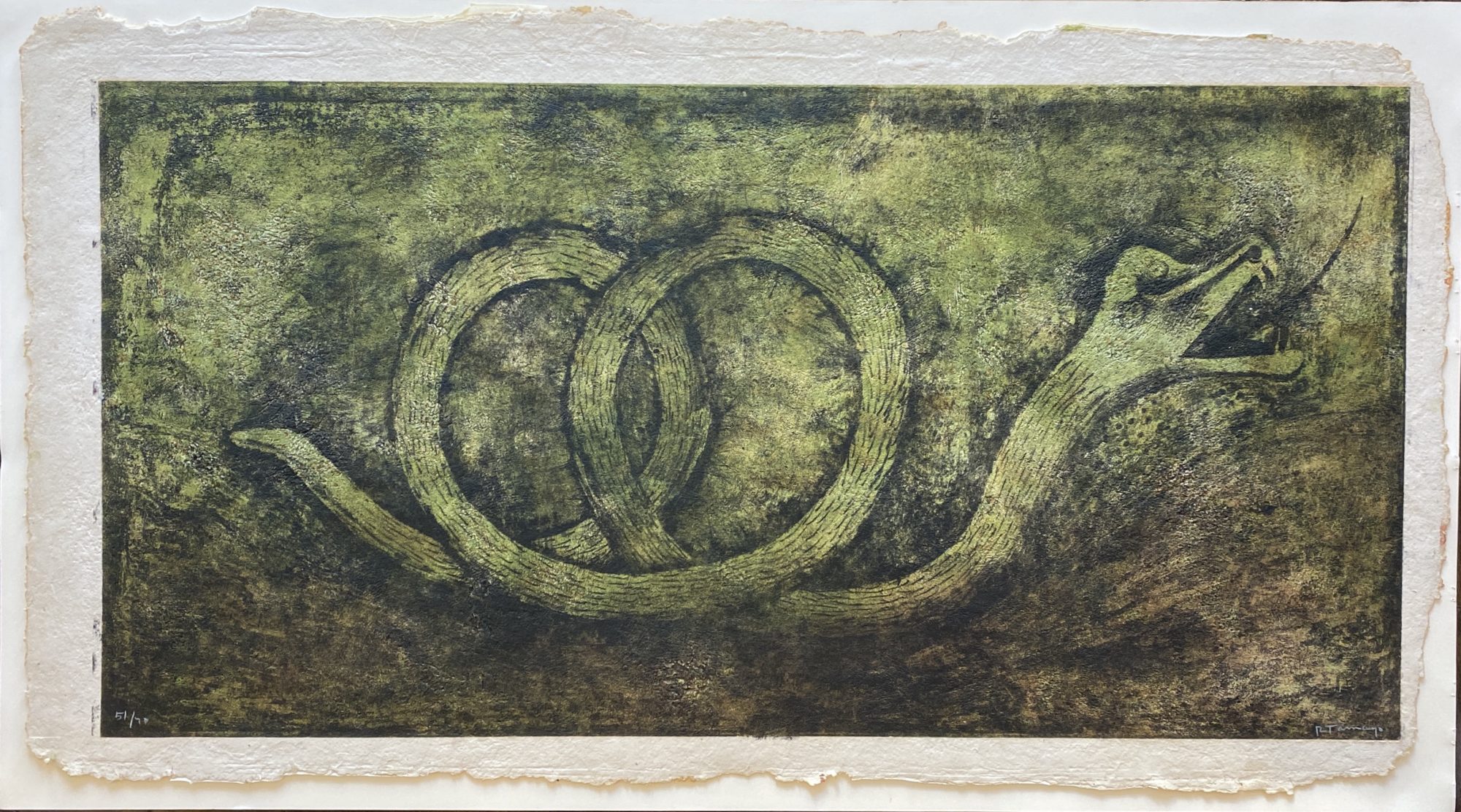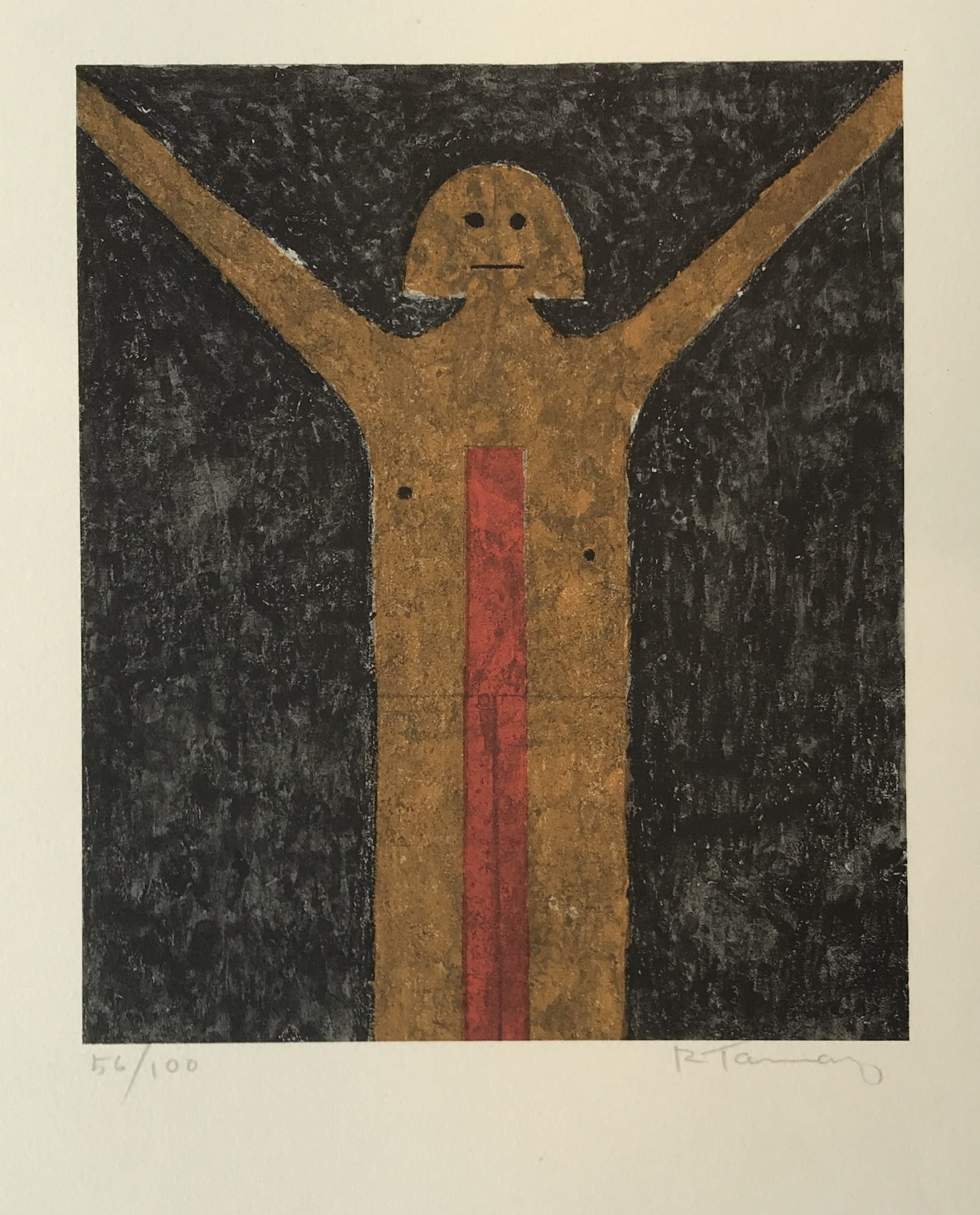Rufino Tamayo – Quetzalcoatl
Rufino Tamayo, Quetzalcoatl is a signed Mixografia on hand-made paper. This print is from the original signed and numbered edition of 70. Signed in crayon by Rufino Tamayo. Printed by the Taller de Grafica Mexicana, Mexico City. Pereda 248.
Rufino Tamayo was a Mexican painter and printmaker known for his large-scale murals and vivid use of color. Like Diego Rivera, David Alfaro Siqueiros, and Jose Clemente Orozco, Tamayo helped garner international attention for Mexican art. Influenced by his pre-Columbian heritage as well as Cubism and Surrealism, Tamayo portrayed vernacular subjects like watermelons and animals in a unique formal vocabulary. “Art is a means of expression that must be understood by everybody, everywhere,” he stated. “It grows out of the earth, the textures of our lives, and our experience.” Born on August 26, 1899 in Oaxaca, Mexico, Tamayo left the San Carlos Academy of Fine Arts after a year and began to teach himself. He moved to New York in the 1930s after having a falling out with the politically driven Rivera and Siqueiros in his home county. Eventually returning to Mexico in 1959, he founded the Museo Tamayo Arte Contemporáneo in Mexico City and the Museo Rufino Tamayo in his birthplace of Oaxaca during the early 1980s.
| Title | Quetzalcoatl |
|---|---|
| Medium | Mixograph |
| Year | 1978 |
| Edition | 70 |
| Catalogue Raisonné | Pereda 248 |
| Signature | Signed |
| Size | 28 x 52 (in) 71 x 132 (cm) |
| Price | SOLD |
Description
Rufino Tamayo, Quetzalcoatl is a Signed Mixografia on hand-made paper. This print is from the original signed and numbered edition of 70. Signed in crayon by Rufino Tamayo. Printed by the Taller de Grafica Mexicana, Mexico City. Pereda 248.
Rufino Tamayo was a Mexican painter and printmaker known for his large-scale murals and vivid use of color. Like Diego Rivera, David Alfaro Siqueiros, and Jose Clemente Orozco, Tamayo helped garner international attention for Mexican art.
Influenced by his pre-Columbian heritage as well as Cubism and Surrealism, Tamayo portrayed vernacular subjects like watermelons and animals in a unique formal vocabulary. “Art is a means of expression that must be understood by everybody, everywhere,” he stated. “It grows out of the earth, the textures of our lives, and our experience.” Born on August 26, 1899 in Oaxaca, Mexico, Tamayo left the San Carlos Academy of Fine Arts after a year and began to teach himself. He moved to New York in the 1930s after having a falling out with the politically driven Rivera and Siqueiros in his home county. Eventually returning to Mexico in 1959, he founded the Museo Tamayo Arte Contemporáneo in Mexico City and the Museo Rufino Tamayo in his birthplace of Oaxaca during the early 1980s.
The artist continued to produce some of his most compelling works including Moon and Sun (1990) right up until his death on June 24, 1991 in Mexico City, Mexico at the age of 91. Today, his works are held in the collections of The Museum of Modern Art in New York, the Art Institute of Chicago, and the Walker Art Center in Minneapolis, among others.
Rufino Tamayo, a Mexican artist of Zapotecan Indian descent, combined European painting styles and Mexican folk motifs in his paintings and prints. Tamayo, admired the works of Pablo Picasso, Georges Braque, and Henri Matisse, developed a strong interest in pre-Columbian art while working at the National Museum of Archaeology in Mexico City. He reacted against the political overtones of the Mexican muralists Diego Rivera, David Alfaro Siqueiros, and José Clemente Orozco; instead, he was concerned with form and symbolism, and combining Mexican styles with Cubism and Surrealism. He was also active in the development of Mixografia, a printmaking technique used to create deep textured effects.
Rufino Tamayo, Quetzalcoatl
Additional information
| Title | Quetzalcoatl |
|---|---|
| Medium | Mixograph |
| Year | 1978 |
| Edition | 70 |
| Catalogue Raisonné | Pereda 248 |
| Signature | Signed |
| Size | 28 x 52 (in) 71 x 132 (cm) |
| Price | SOLD |




